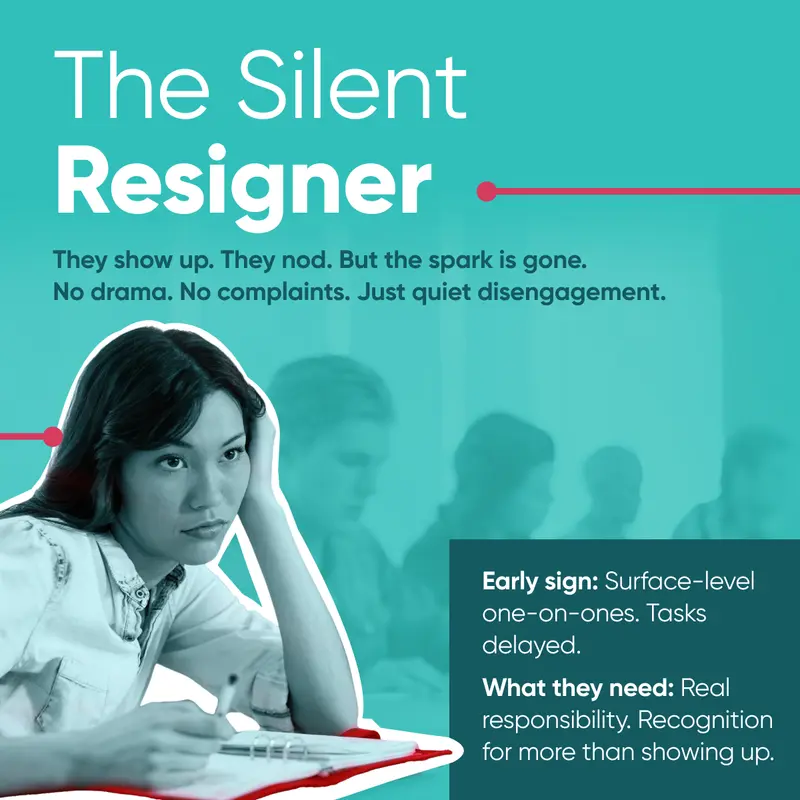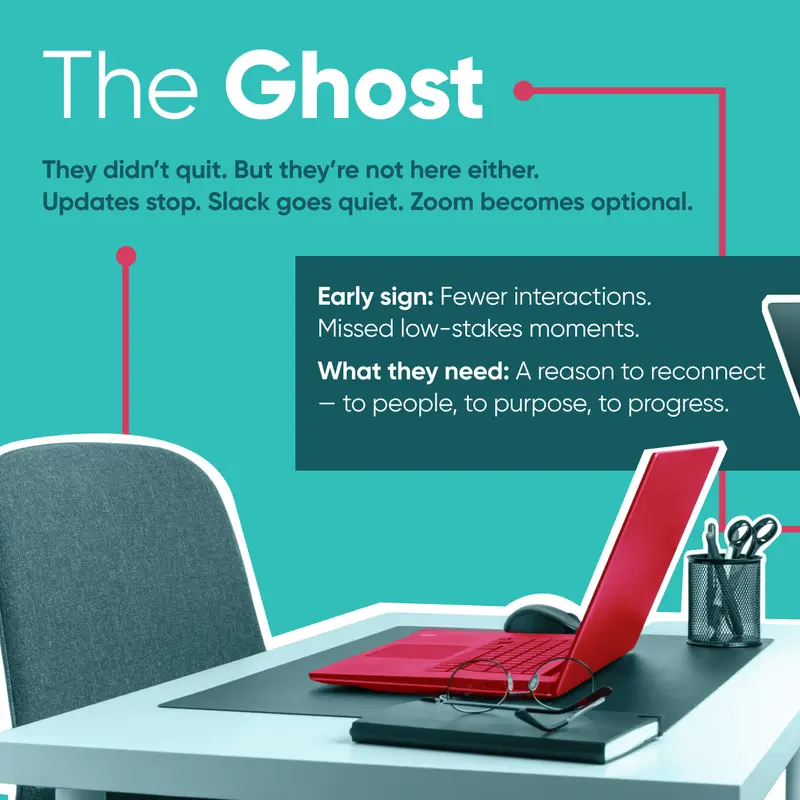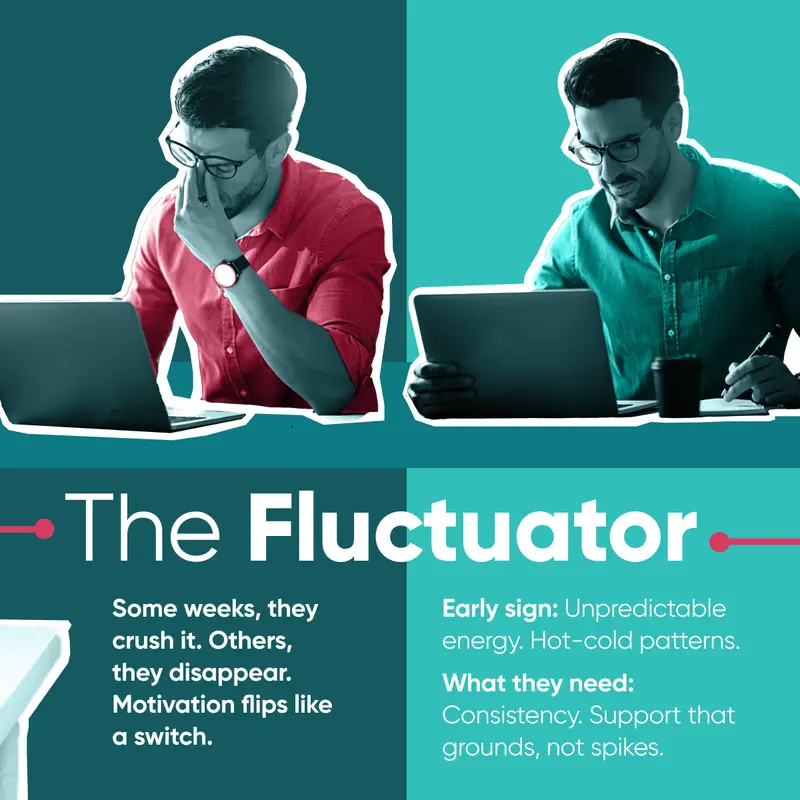
How to Spot Sales Burnout Before It Slows Your Team Down
Sales reps often go quiet before they burn out. Learn how to spot early disengagement, shift team energy, and lead with habits that protect motivation and long-term performance.
0 min read.
Burnout doesn’t show up overnight. It builds quietly, across weeks, months, and quarters, until a team that once thrived starts dragging. You see it in delayed follow-ups, disengaged standups, and reps who once led now trying to keep up. And by the time most sales leaders notice it, the damage is already done.
Burnout is no longer a fringe issue. According to a recent report by Indeed, more than 50% of workers say they’re burned out, with Gen Z and Millennials showing the highest levels of fatigue. In sales, where pressure, targets, and rejection are daily fuel, the signs are even more visible, and yet still often ignored.
So, how can you recognize the early signs and stop the slide before it hits your numbers?
What Causes Burnout Inside Sales Teams
Burnout doesn’t always come from doing too much, it often comes from doing a lot of things that don’t feel meaningful, recognized, or aligned. For sales reps, this hits hardest in a few key areas:
1. Lack of control over daily priorities
Most reps walk into work with a to-do list. But by mid-morning, it’s hijacked by new tasks, urgent requests, or CRM housekeeping. When reps feel like they’re constantly reacting instead of owning their plan, motivation drops.
To fix this, give reps more control over how they plan their day. Help them understand where they’re best, and build processes that support autonomy with structure.
2. Limited visibility into their own progress
Sales is one of the most performance-driven jobs, yet many reps don’t know if they’re ahead or behind until it’s too late. If metrics are buried in dashboards or only reviewed during pipeline meetings, feedback comes too late to drive change.
Give your team real-time, personalized performance insights that help them stay self-aware and make course corrections daily, not quarterly.
3. Recognition that feels delayed or generic
When reps hear “good job” once a month in a team meeting, it doesn’t do much. Recognition that’s too broad or too rare gets tuned out. And when only revenue gets celebrated, the steps that lead there are overlooked.
To build ongoing motion, make recognition specific, real-time, and tied to behavior; calls made, meetings booked, deals progressed. Acknowledge the effort, not just the outcome.
4. Misaligned goals and expectations
Sometimes, burnout doesn’t come from the work, it comes from chasing goals that feel unrealistic or irrelevant. When reps are given a number without context, they disconnect from the mission and just try to survive the quarter.
To fix this, align team and individual goals with clarity. Show how their work connects to the company’s bigger picture, and involve them in setting targets when possible.

The Five Types of Burned-out Sales Reps
Not all burnout looks the same. Here are the five types of burned-out reps you should look out for and how to spot them early:
1. The Silent Resigner
This rep still shows up and goes through the motions, but the spark is gone. They nod along in meetings, offer little input, and quietly sidestep responsibility. Their one-on-ones become surface-level, and their follow-through starts to slip. They’re not causing problems, but they’re no longer challenging themselves either.

2. The Overcompensator
They're running at full speed, but not in the right direction. Every lead feels urgent, every hour is packed, and late-night emails become the norm. Beneath the surface, their responsiveness drops and coaching feels like a distraction. Overcommitted and under-aligned, they’re trying to outrun a problem instead of addressing it.

3. The Ghost
Without saying a word, they start to disappear. CRM updates slow down, conversations in Slack go unanswered, and team calls feel optional. Their silence isn’t defiant, it’s a sign they’ve mentally checked out. The connection to the team, the work, and the mission has quietly faded.

4. The Fluctuator
They’re up one week, down the next. Performance spikes with bursts of enthusiasm, only to crash without warning. It’s hard to know which version of them will show up. Their energy feels unstable, and their motivation fluctuates as they try to stay connected without fully burning out.

5. The Skeptic
They haven’t disengaged, but they’ve stopped believing. Every update is met with questions, every decision with doubt. Their criticism might be valid, but it carries an undertone of resistance. Over time, this mindset influences others and drags down momentum across the team.

Why Most Fixes Don’t Work
When leaders notice burnout, the first instinct is often to push harder, run competitions, or try to re-energize the team with short-term perks. But these rarely solve the root problem.
Burnout is emotional before it's operational. It comes from disconnection, misalignment, and the slow loss of belief that the work matters. If you treat it like a performance issue, you’ll miss the signals until it becomes a retention issue.
What Actually Helps Sales Teams Bounce Back
The turning point for most teams isn’t a grand reset. It’s a few consistent behaviors that bring clarity, energy, and focus back into the day-to-day. These are habits that make a difference:
- Real-time progress visibility. When reps know exactly where they stand, they can take control of their performance.
- Recognition in the moment. Celebrate effort as it happens, not after the quarter ends.
- A team rhythm that reduces chaos. Regular check-ins, goal reviews, and energy resets help bring focus and motivation back.
- Coaching that’s proactive. Build reflection into the week—not just when performance dips.
- Clear connection to purpose. Remind reps how their work impacts the team, the company, and the customer.
These aren’t big programs or expensive tools. They’re small shifts in leadership behavior that, over time, change how teams feel, operate, and grow.
Final Thoughts
Burnout doesn’t start with one bad quarter. It starts when reps feel unseen, unsupported, and unsure about where they’re ging. The most resilient teams don’t avoid pressure; they build systems that help reps thrive under it.
If your team’s energy feels different lately, now’s the time to lean in, not with more pressure, but with clarity, trust, and support. That’s how you spot burnout before it slows you down, and how you create a culture where performance is sustainable, not exhausting.







